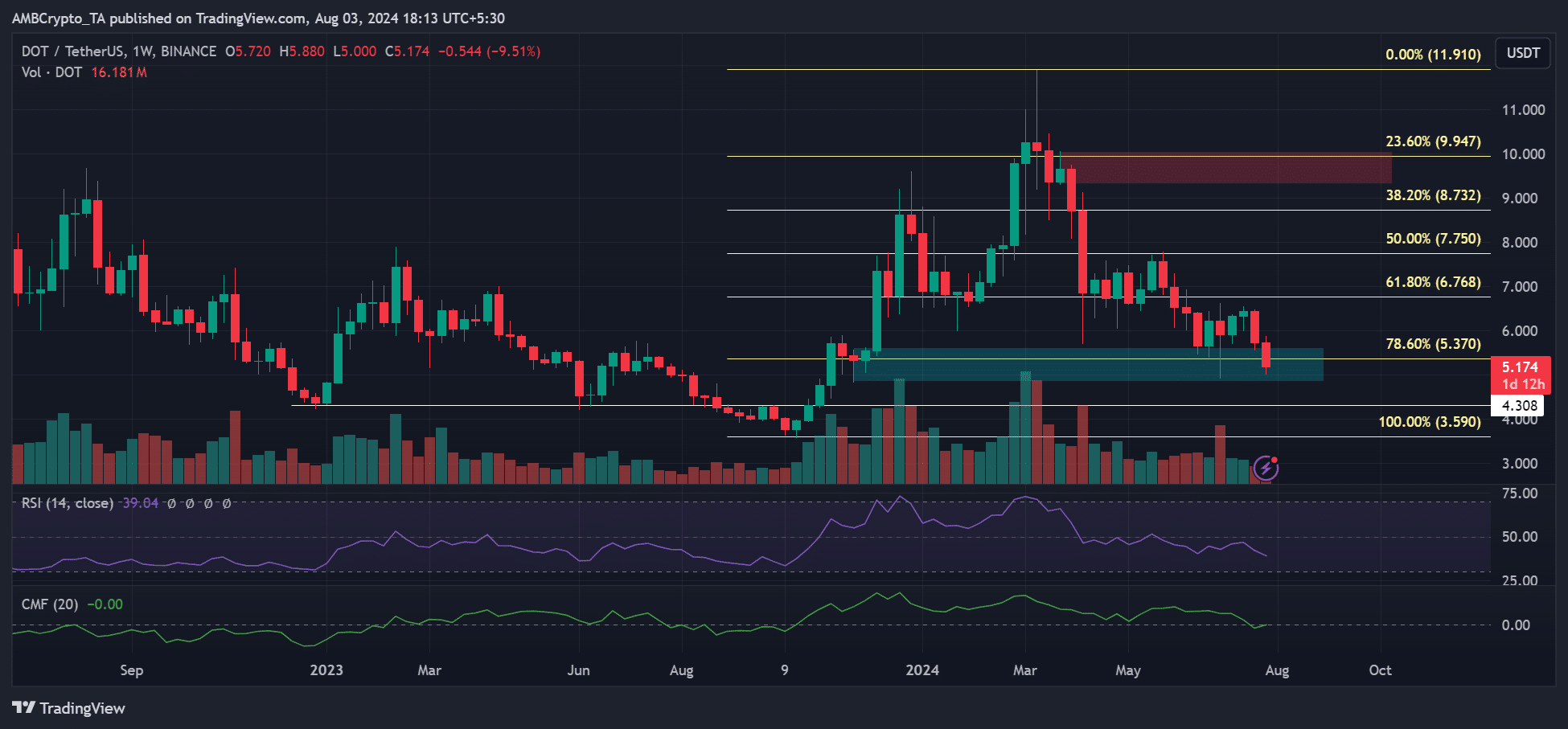- Polkadot inflation sparks debate as DOT tanks further.
- Some users argue that a +10% inflation rate erodes DOT’s value.
Polkadot [DOT] has hit the headlines as debate rages over its alleged high inflation rate. Insiders, who voiced their concern on Reddit, have called for a change in the network’s inflation rate to boost the altcoin value. One user said,
‘Staking rewards are useless to an investor when the coin keeps losing value. Principal erosion is far greater than the 10% – 14% staking rewards.’
Another supported the call, stating that he would rather hold on to his cash if it was going to be eroded by DOT’s inflation.
‘I love high staking rates as much as the next person, but if my DOT keeps losing value relative to the staking returns…..then I’d be better off holding cash for the same period of time.’
Is DOT inflation to blame?
However, another user countered the stakers’ proposal, stating that the problem is network growth, not inflation.
‘The problem is network adoption, not inflation.. if the network was growing and we had people using it, the price would go up.. you can lower the inflation to zero, and it won’t make any difference’
For perspective, like Ethereum or Solana [SOL], validators and nominators (less savvy players who commit their DOT to validators) earn rewards for their staking aimed at securing the Polkadot network.
The rewards range between 8% and 14%, and some feel that this is unsustainable for DOT’s value. Per Polkadot scan data, DOT’s current supply is about 1.4 billion tokens, nearly 60% of which are staked.
After hitting a 2024 record high of $11.8, the altcoin has shed over 56% of its value. It has dipped to $5, compounded by market sentiment and inflation. In the past 7 days, DOT 2.8 million tokens hit the market, worth over $14 million per Token Unlocks data.
According to a June Deribit report, inflation’s downward pressure on value was a trend seen across most ETH L2 tokens.
Can DOT rebound?
Now, the DOT price has erased all the 2024 gains and was trading at last November’s values.
Additionally, technical chart indicators on higher timeframe charts underlined a weakening market. The RSI (Relative Strength Index) has been below average since April, underscoring the massive sell-off for the altcoin.

Source: DOT/USDT, TradingView
Some stakers had warned that they would rather ditch the network if the higher rewards (or inflation) is adjusted or dropped.
However, the overall sentiment on DOT has been negative since April, apart from late June. It meant that speculators on the altcoin weren’t expecting an upside potential for DOT.


Source: Santiment
It meant that DOT’s muted price action could extended unless the ongoing debate reaches an agreement that doesn’t put more pressure on the altcoin value.

